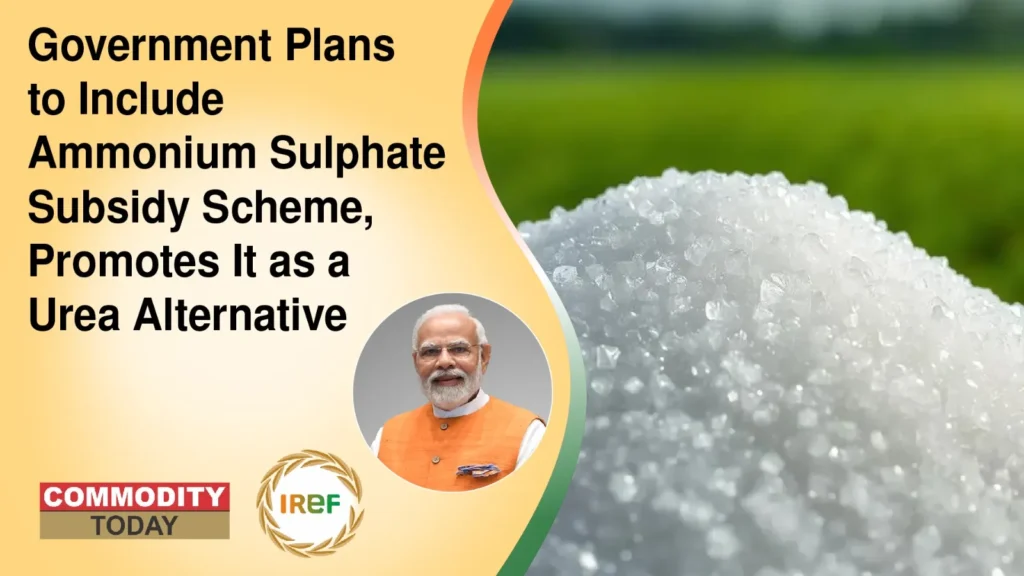In a major move to reduce dependence on urea and promote balanced fertilizer use, the Government of India has announced the inclusion of ammonium sulphate subsidy scheme under the nutrient-based subsidy (NBS) scheme starting from the Rabi season 2025-26 (October 2025–March 2026). The Ministry of Fertilizers has confirmed that both domestic and imported ammonium sulphate will now receive the same subsidy benefits as urea.
According to the official notification, the subsidy rate for ammonium sulphate will be ₹43.02/kg for nitrogen and ₹2.87/kg for sulphur, resulting in a total subsidy of ₹9,479 per tonne for the AS 20.5-0-0-23 variety, which contains 20.5% nitrogen and 23% sulphur.
Cheaper, Efficient and Soil-Friendly Fertilizer Option
This decision is expected to make ammonium sulphate (AS) a more affordable and sustainable fertilizer for Indian farmers. A 50 kg bag of AS 20.5-0-0-23, which previously cost around ₹1,100–1,200, is now likely to retail at approximately ₹700 per bag after the subsidy is applied.
Experts highlight that ammonium sulphate not only provides essential nitrogen but also enhances soil health through sulphur enrichment, making it a soil-friendly fertilizer compared to excessive urea use. Industry sources noted that the previous subsidy on the same variant during the Kharif 2025 season was ₹9,419 per tonne, and the latest revision accounts for a higher sulphur subsidy rate.
Bridging Urea Supply Challenges
The move also comes amid concerns over urea shortages in India during the last Kharif 2025 season, despite the fertilizer ministry reporting adequate availability. Official data showed that against an estimated demand of 185.39 lakh tonnes of urea, actual sales reached 193.20 lakh tonnes, with total availability of 230.53 lakh tonnes.
However, reports from several states cited fertilizer shortages, prompting state ministers to request additional urea supplies and investigate cases of black marketing at the dealer level. While the ministry reported a urea stock of 48.64 lakh tonnes as of October 1, 2025, sources from the agriculture ministry’s crop weather watch group estimated the actual stock closer to 37.33 lakh tonnes. Experts believe that by expanding the subsidy to include ammonium sulphate, the government aims to diversify fertiliser consumption, reduce dependency on urea, and ensure balanced nutrient management for long-term soil fertility.
Read Latest News:
- Cambodian Govt injects $40M to stabilize Plunging Rice Prices
- Government Plans 1.5 mln Ton Sugar Export to Ease Surplus
- South Korea Backs New Seed Facilities to Strengthen the Philippine Rice Sector and Food Security
- Tobacco Farmers Condemn Exclusion From WHO Conference Ahead of COP11
- Japan Struggles With Soaring Rice Prices In Test For New Prime Minister



